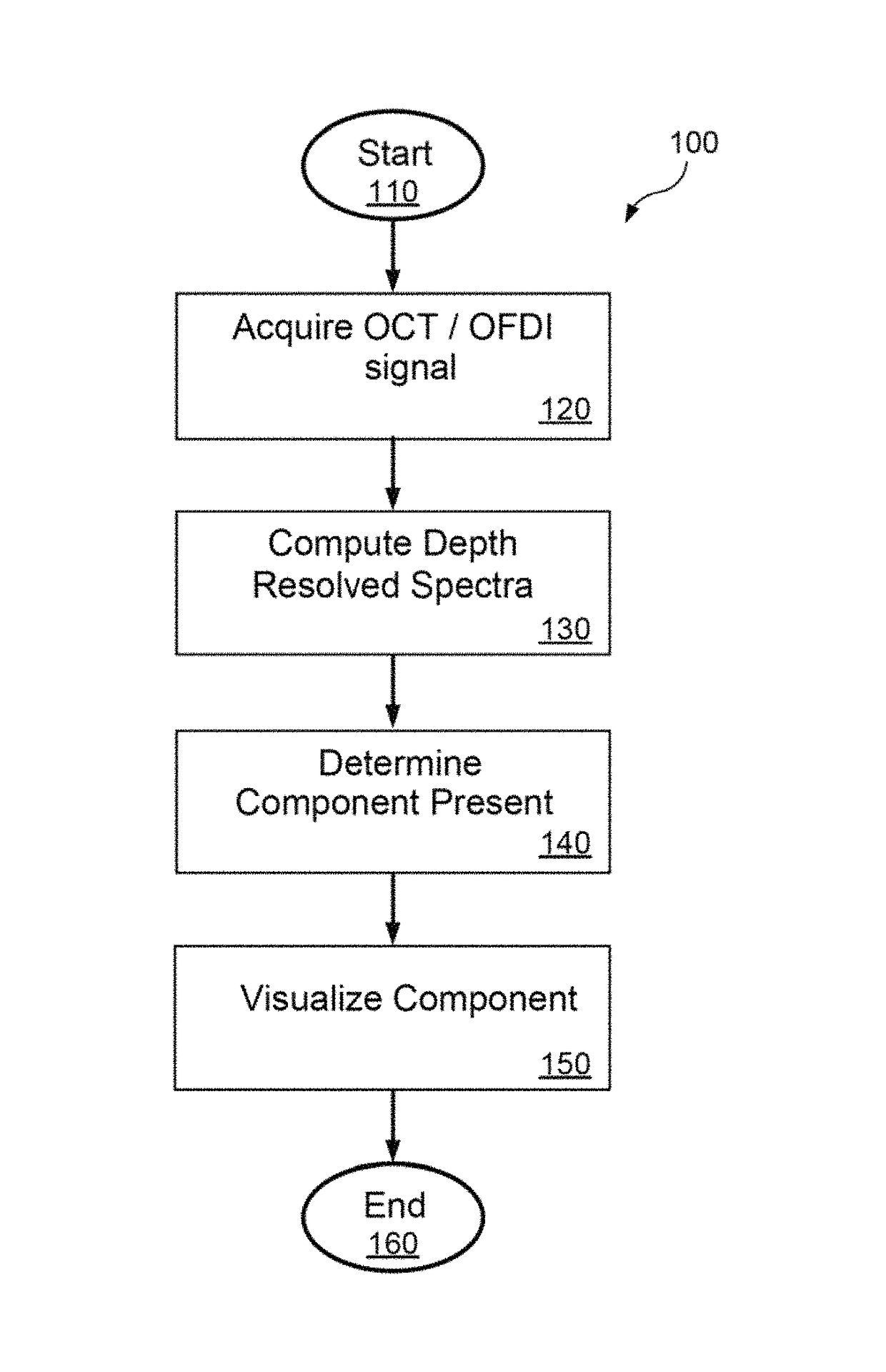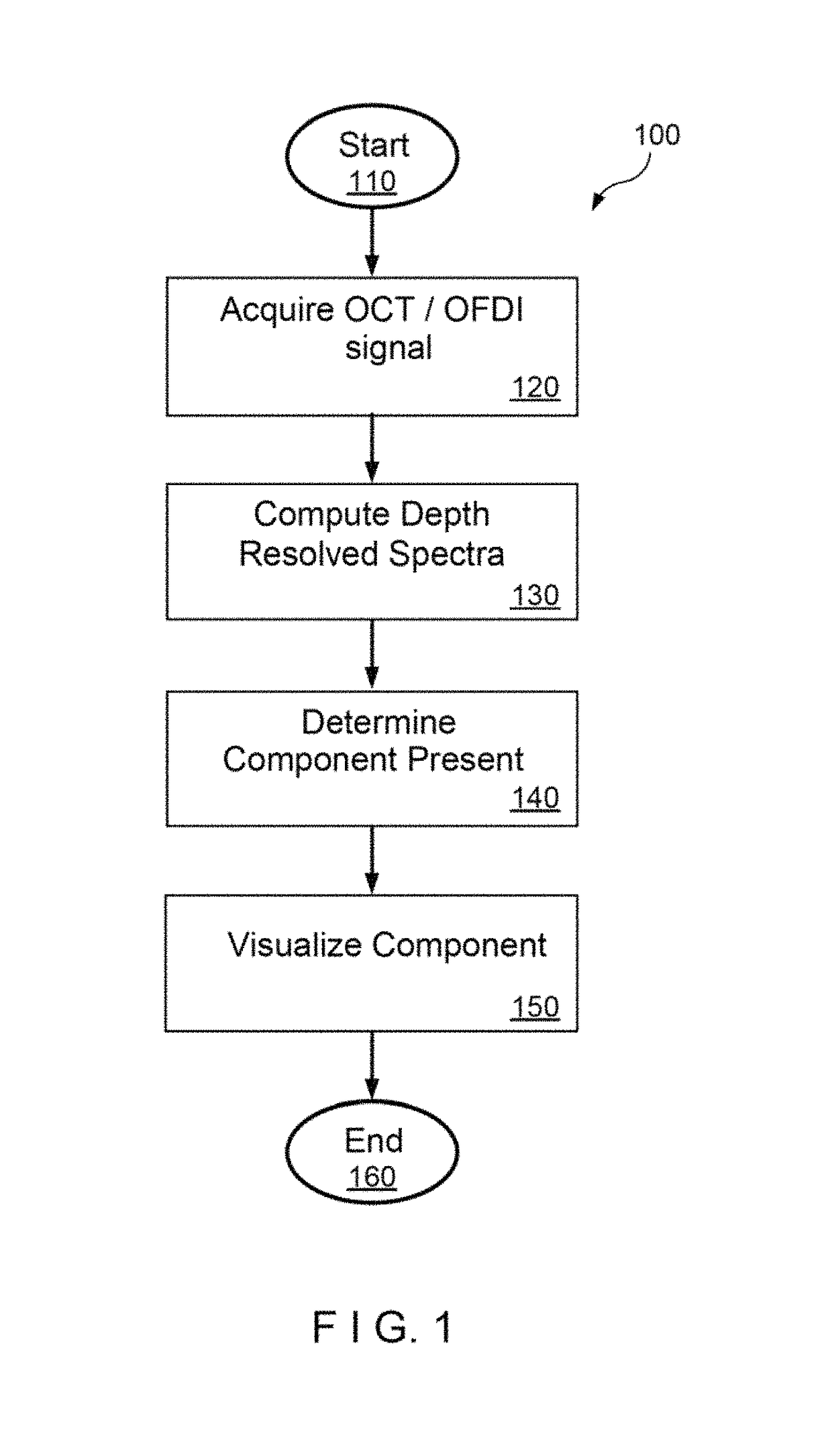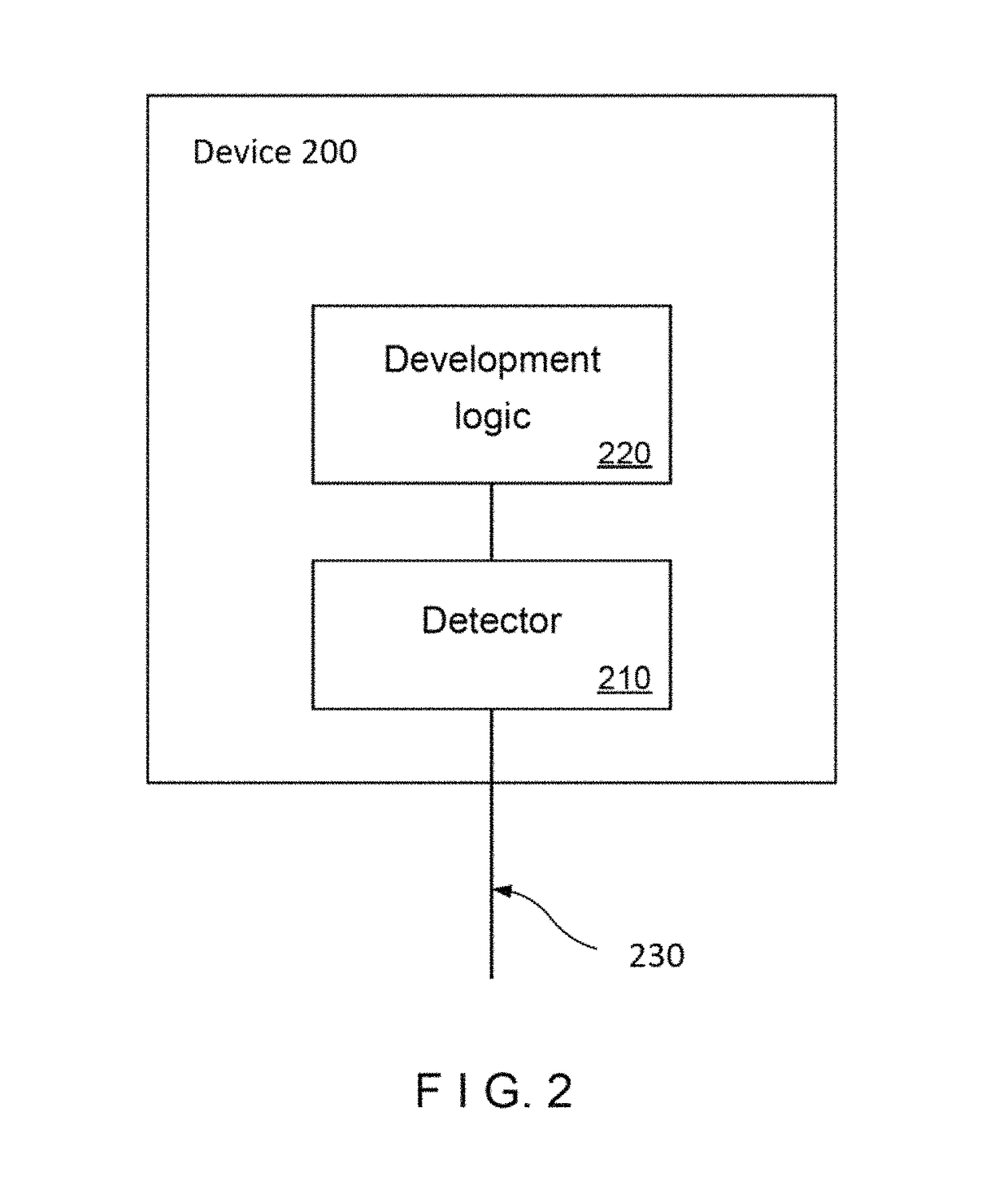Apparatus, systems, methods and computer-accessible medium for spectral analysis of optical coherence tomography images
a technology spectral analysis, which is applied in the field of spectral analysis of optical coherence tomography images, can solve the problems of difficult to definitively identify, difficult interpretation of images in other organ systems, and difficulty in identifying oct techniques, so as to improve the contrast of intracoronary oct images, reduce scattering effect, and increase accuracy and time
- Summary
- Abstract
- Description
- Claims
- Application Information
AI Technical Summary
Benefits of technology
Problems solved by technology
Method used
Image
Examples
Embodiment Construction
[0008]It is therefore one of the objects of the present disclosure to reduce or address the deficiencies and / or limitations of such prior art approaches, procedures, methods, systems, apparatus and computer-accessible medium.
[0009]Herein, exemplary embodiments of systems, apparatus, methods and computer-accessible medium are described for depth resolved spectral analysis of OCT interferometric data and visualization methods for the identification of lipid rich regions. According to one exemplary embodiment, an analysis of inteferometric signals acquired (or previously acquired) with current coronary OCT catheters and systems can be utilized for spatial identification of lipid rich regions. The combined exemplary architectural and chemical analysis can improve contrast of intracoronary OCT images, which can increase the accuracy and time to which a user identifies diseased areas.
[0010]According to an exemplary embodiment of the present disclosure, apparatus and method can be provided...
PUM
| Property | Measurement | Unit |
|---|---|---|
| wavelengths | aaaaa | aaaaa |
| wavelengths | aaaaa | aaaaa |
| wavelengths | aaaaa | aaaaa |
Abstract
Description
Claims
Application Information
 Login to View More
Login to View More - R&D
- Intellectual Property
- Life Sciences
- Materials
- Tech Scout
- Unparalleled Data Quality
- Higher Quality Content
- 60% Fewer Hallucinations
Browse by: Latest US Patents, China's latest patents, Technical Efficacy Thesaurus, Application Domain, Technology Topic, Popular Technical Reports.
© 2025 PatSnap. All rights reserved.Legal|Privacy policy|Modern Slavery Act Transparency Statement|Sitemap|About US| Contact US: help@patsnap.com



